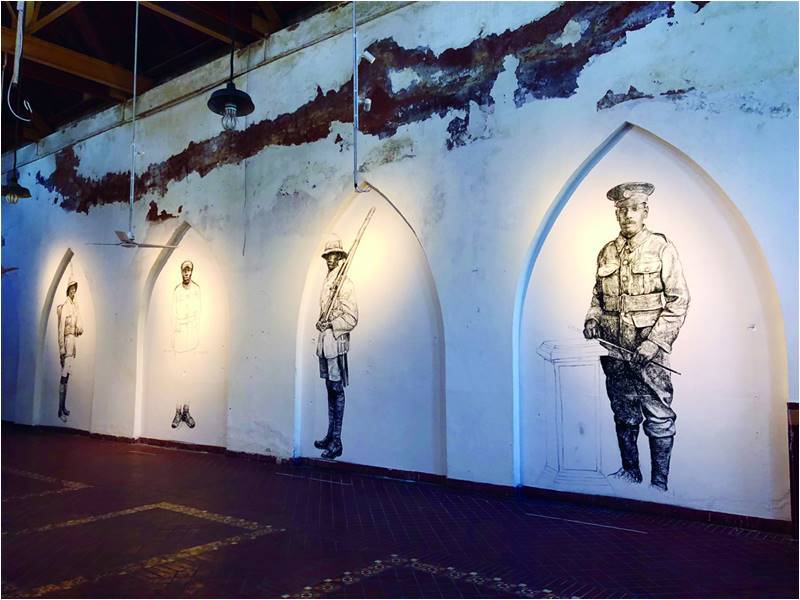
With the arrival of the Lahore and Karachi biennale shows, Pakistan’s contemporary art scene continues on an upward trajectory. The second edition of the Lahore Biennale (LB02) is being held in the city till the 29th of February. In addition to the biennale, a number of parallel or “collateral” art events are taking place in Lahore. Hoor Al Qasimi is the curator of LB02. Qasimi is President and Director of the Sharjah Art Foundation and has made a distinct mark in the international art world as curator and art influencer – especially by reinforcing the perspective of the global South. She selected “between the sun and the moon” as the theme for LB02, stating that for centuries the moon, the sun and constellations provided reference points or orientation to people in this region and beyond. But question is: how does one inflect on humanity’s place in the cosmos given today’s challenges?
The first biennale in the world was held in 1875 in Venice and since the 1950s places hosting biennials have expanded – including in developing countries. “Biennial” now is a loose term used for regularly held city-wide international art events documenting contemporary art. We are dealing with not just biennials, but also triennials and even the five-yearly documenta among others. Both the Lahore and Karachi biennials were started in 2018 and have now successfully moved into their second editions.
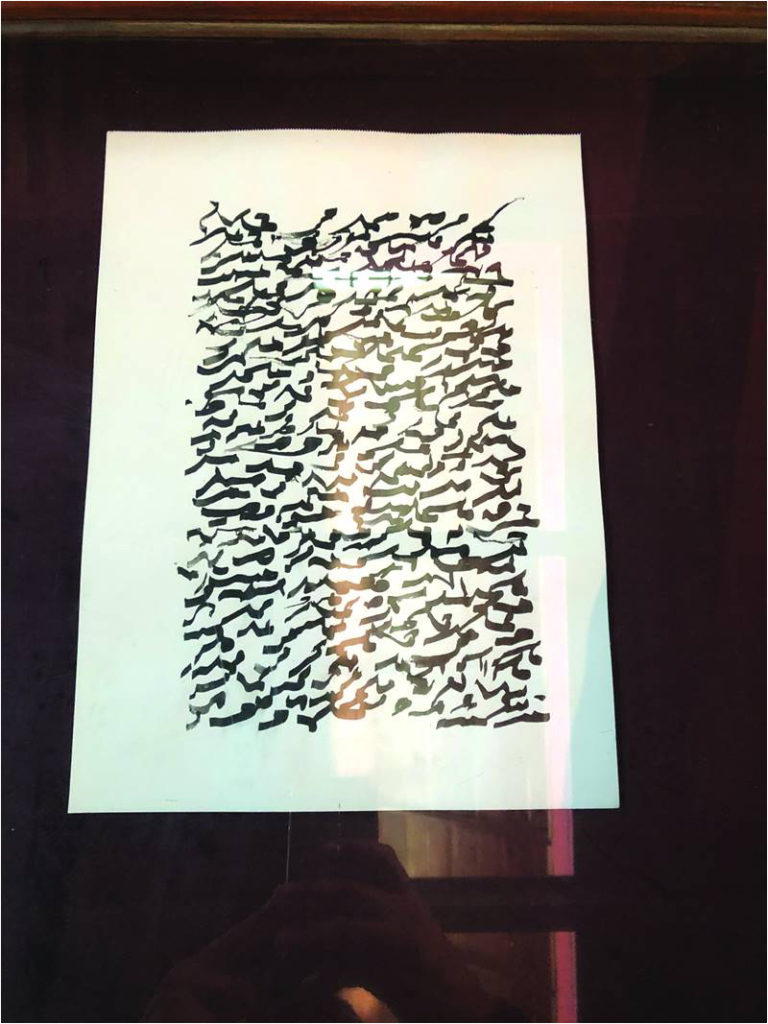
Holding a biennale in a city like Lahore with its history and culture is not an easy task for the organizers or the curator – and even for the artists. The first edition of LB commissioned artists mostly from Pakistan, but for the second edition the curator Qasmi selected 70 artists, a majority of whom were from outside Pakistan. This was a challenging undertaking but daring as Qasmi is, she has turned LB02 into a game-changer for Pakistan’s entry into the international art scene. 13 different locations in Lahore were selected by Qasimi including the Lahore Fort, the Museum, Bradlaugh Hall, Tollinton, NCA and the Alhamra Arts Council etc. This also speaks for the hard work by the Lahore Biennale Foundation (LBF), especially the leadership provided by Qudsia Rahim, Osman Waheed and Raza Dada who have set higher standards for each of the LB editions. LB02 has been organized with support from both the private and public sector, including the Ministry of Foreign Affairs.
LB02 has brought a good opportunity for a host of artists from across the world to display their work and in turn learn about and experience Pakistan’s rich cultural heritage. One of the debates around organizing biennials’ is as to whether they are held only to promote art of one particular place or whether they are envisioned as a big art event to challenge artists from across the world to work in a different ambiance and thereby promote international contemporary art. One observes that cities which have been hosting biennales for a long time like Venice fall in the latter category and those who have recently joined the biennale bandwagon remain enchanted with a location-specific rich history for the first few editions. The Lahore Biennale has allowed international visitors to experience works in Lahore’s backdrop and a mix of international artists to showcase their work, while also providing opportunity for local artists to get exposed to international works. The timing of LB02 is also important because for the inhabitants of the city this is the time for the kite-flying Basant festival. LB02 brings artwork of different shapes, sizes and colours to Lahore’s landscape.
It is not possible to review all the Biennale works and the collaterals but an overview would help give some sense of the big scale of the biennale and the wide variation amongst artists participating.
The display at the National College of Arts includes Rasheed Araeen, the Pakistani-origin British artist known for his colorful, geometric and modular installations and his pioneering role in bringing the voices and works of artists from the global South to the UK. His work is also an inspiration for Al Qasimi’s generation. In addition to his signature red coloured geometric installation, the display includes his collage and and mix-media work which explore themes of identity, race and struggles of immigrant artists. A self-portrait titled “How could one paint a self-portrait” shows Araeen’s face covered with racist graffiti and a rejection letter on the forehead from an art gallery – together showing the arduous struggles of immigrant artists. Anwar Saeed’s captivating work with midget-like figures in acrylic is also displayed at the same location.
The Lahore Fort site has Khadim Ali’s rich and brightly colored tapestries with evil characters from different mythologies engaged in battle with contemporary armament - much like a video game scene. Ali always bring characters of the epic Shahnameh to life in contemporary settings. At the Summer Palace an interesting documentary by the Egyptian artist Wael Shawky showed the Crusades through puppetry. And in close proximity another artist Hrair Sarkissian had documented the flight of the endangered bald ibis.
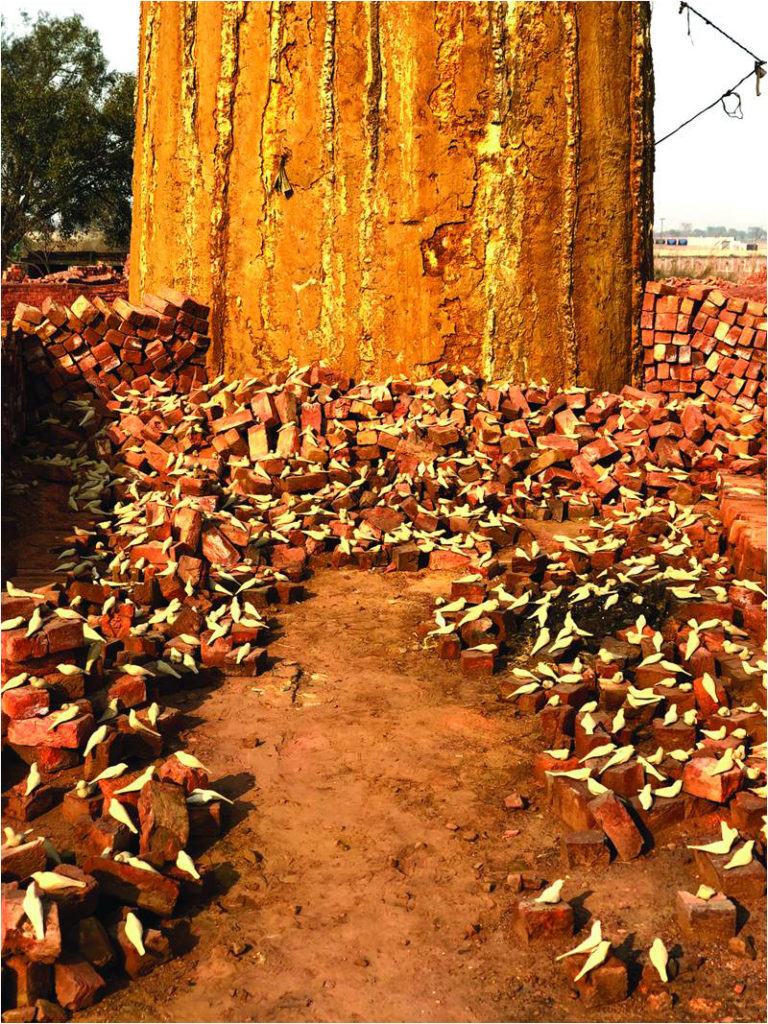
Diana Al-Hadid is a Syrian-American artist from New York known for a drip-like effect in her work. In the Dewan-e-Aam garden she has installed a full-scale white coloured Anarkali mausoleum with dripping effect complete with arches and an inverted dome over a grave. The structure, though beautiful, is lost in the expanse of the Lahore Fort’s gardens.
At the Lahore Museum’s Gandhara exhibit area, Mohammad Ali Talpur’s mesmerizing scripts gelled with the ancient Gandhara sculptures as if Talpur’s script is part of the museum collection. Algerian artist Rachid Koraichi’s work is inspired from North African Sufi traditions. His use of script, symbols and design elements though a modernist framework have a distinct North African design and sensibility - making them a visual delight besides the potent symbolism. Koraichi’s lithographs and silk banner add much colour in the otherwise faded ambience of the Museum. The New York Times’ Holland Cotter had written that Koraichi’s “graphically punchy art is fully in the global modernist and postmodernist flow.”
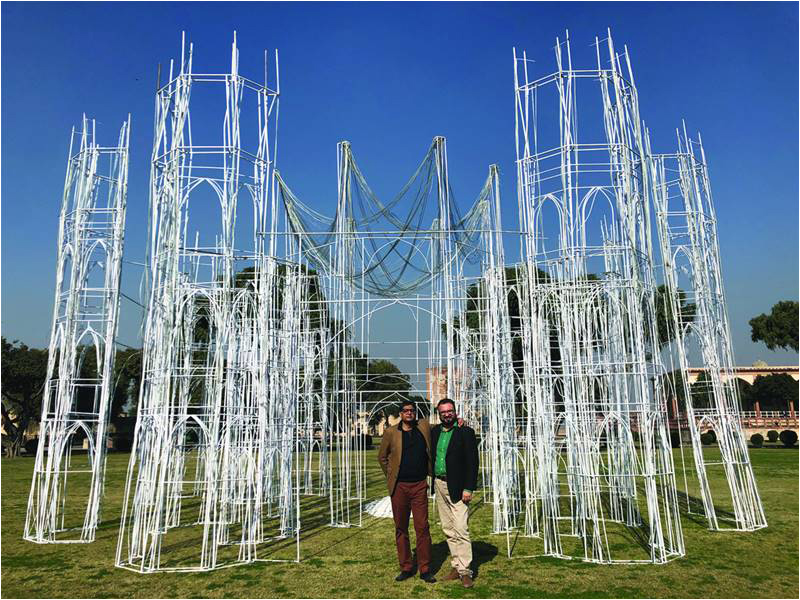
The Tollinton Market venue has another exciting group of artists. These include John Akomfrah, Bouchara Khalili and Hassan Hajjaj among others. British artist Barbara Walker’s site-specific human figures in a Raj building are like real life characters living in Tollinton’s hall. Walker’s detailed charcoal figures have a sense of nostalgia and are a haunting homage to countless African soldiers who served the British empire. At the Punjab University among other works Vivan Sundaram had juxtaposed photographs of Amrita Sher-Gil in different time and contexts. Sundaram is Sher-Gil’s nephew and used family photographs. Display of such photographs close to where the legendary Sher-Gil lived and worked and right across the Lahore Museum where her work is displayed was an interesting aspect.
Among the collateral shows Aisha Khalid and Jonathan Watkins’ “A Rich Tapestry” has works from four of Ikon Gallery’s artists along with Imran Qureshi and Ali Kazim. The four artists Mahtab Hussain, Mathew Krishanu, Farwa Moledina and Osman Yousefzada have roots in South Asia. The multi-disciplinary show has Hussain’s photography, Krishanu’s paintings, installation by Yousefzada and textiles by Moledina – whereas Kazim and Qureshi have a site-specific work. Krishnau’s study of crows is interesting from a South Asian perspective as Lahore’s days are incomplete without sight and sound of crows or protecting edibles from crows stealing away a piece or two.
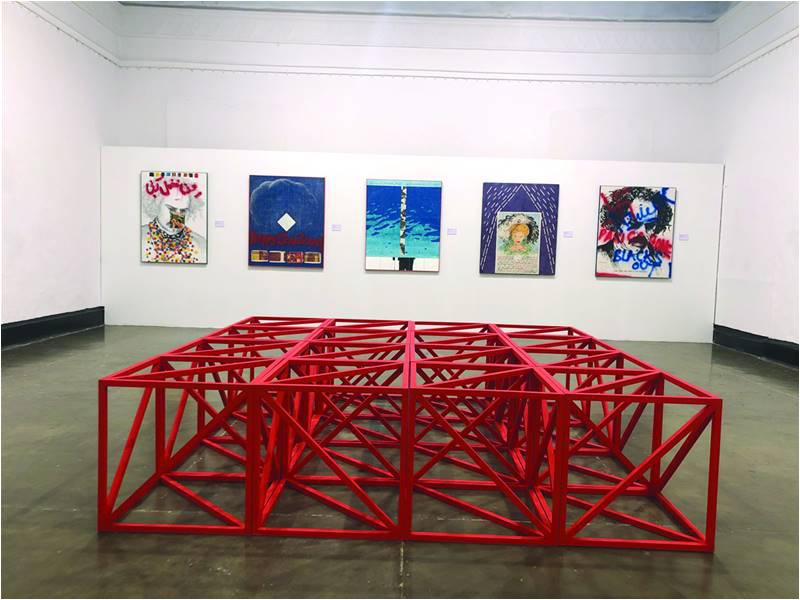
Kazim and Qureshi have done a site-specific work in a brick kiln neighbouring the AK studio. Kazim moves on with his fascination with Attar’s ‘Conference of the Birds’ and filled the site with hundreds of unbaked clay sparrows scattered across the kiln’s brick red hues. The work shows Kazim’s penchant for details as the sparrows are in all possible angles and postures. It appeared as if real sparrows have suddenly descended in a Punjab landscape and beautifully submerged into the reds of the brick clutter. Kazim’s immaculate portraits are also part of the Biennale, displayed at the Punjab University. Qureshi’s “Earth to earth, ashes to ashes, dust to dust” plugs in the kiln’s brick-baking openings with bundles of stacked printed papers carrying Qureshi’s works from different exhibitions.
Another collateral show titled “It’s about Body” curated by RM Naeem and housed at O Art Space of Omar Nabi. The show is based on Rumi’s verse “Water, stories, the body, all the things we do, are mediums that hide and show what’s hidden” and comprises an impressive list of artists from across Pakistan.
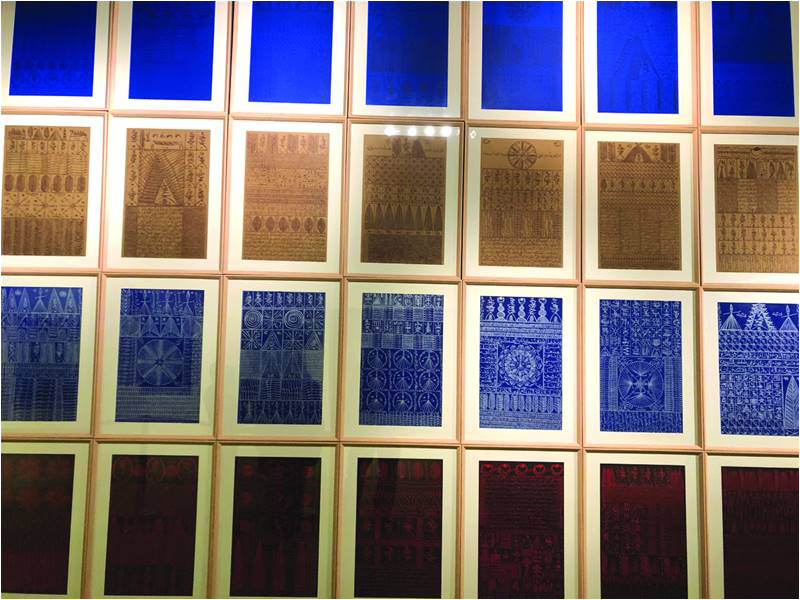
While Qasimi has opened the LB02 to the world, LBF should also try to decipher the biennale for the domestic public at large – making the art world more accessible to them and not only focusing on exclusive art circles.
Anthony Gardner and Charles Green in their “Biennials of the South on the Edges of the Global” categorize two types of biennials. First, biennials as an extension of globalization and neoliberalism, and second, biennials as “sites for social dialogue and cross-disciplinary exchange.” The second edition of Lahore Biennale seems to bridge the two. Hoor Al Qasimi was inspired by how the late Nigerian curator Okwui Enwezor brought the South to documenta in 2002 as its first non-European curator. Enwezor also changed the Venice Biennale in 2015 as its first African curator. Al-Qasmi was working with both Enwezor and Araeen, the two important voices who brought post-colonial and non-Western artists to the preeminently Western international art world. In the same vein Qasimi has taken the LB02 to the outer world and this may yet be a game-changing Biennale – restoring Lahore’s place as a city of global confluence of arts and culture.
The writer can be reached at smt2104@caa.columbia.edu
The first biennale in the world was held in 1875 in Venice and since the 1950s places hosting biennials have expanded – including in developing countries. “Biennial” now is a loose term used for regularly held city-wide international art events documenting contemporary art. We are dealing with not just biennials, but also triennials and even the five-yearly documenta among others. Both the Lahore and Karachi biennials were started in 2018 and have now successfully moved into their second editions.

Holding a biennale in a city like Lahore with its history and culture is not an easy task for the organizers or the curator – and even for the artists. The first edition of LB commissioned artists mostly from Pakistan, but for the second edition the curator Qasmi selected 70 artists, a majority of whom were from outside Pakistan. This was a challenging undertaking but daring as Qasmi is, she has turned LB02 into a game-changer for Pakistan’s entry into the international art scene. 13 different locations in Lahore were selected by Qasimi including the Lahore Fort, the Museum, Bradlaugh Hall, Tollinton, NCA and the Alhamra Arts Council etc. This also speaks for the hard work by the Lahore Biennale Foundation (LBF), especially the leadership provided by Qudsia Rahim, Osman Waheed and Raza Dada who have set higher standards for each of the LB editions. LB02 has been organized with support from both the private and public sector, including the Ministry of Foreign Affairs.
LB02 has brought a good opportunity for a host of artists from across the world to display their work and in turn learn about and experience Pakistan’s rich cultural heritage. One of the debates around organizing biennials’ is as to whether they are held only to promote art of one particular place or whether they are envisioned as a big art event to challenge artists from across the world to work in a different ambiance and thereby promote international contemporary art. One observes that cities which have been hosting biennales for a long time like Venice fall in the latter category and those who have recently joined the biennale bandwagon remain enchanted with a location-specific rich history for the first few editions. The Lahore Biennale has allowed international visitors to experience works in Lahore’s backdrop and a mix of international artists to showcase their work, while also providing opportunity for local artists to get exposed to international works. The timing of LB02 is also important because for the inhabitants of the city this is the time for the kite-flying Basant festival. LB02 brings artwork of different shapes, sizes and colours to Lahore’s landscape.
Hoor Al Qasimi was inspired by how the late Nigerian curator Okwui Enwezor brought the South to documenta in 2002 as its first non-European curator
It is not possible to review all the Biennale works and the collaterals but an overview would help give some sense of the big scale of the biennale and the wide variation amongst artists participating.
The display at the National College of Arts includes Rasheed Araeen, the Pakistani-origin British artist known for his colorful, geometric and modular installations and his pioneering role in bringing the voices and works of artists from the global South to the UK. His work is also an inspiration for Al Qasimi’s generation. In addition to his signature red coloured geometric installation, the display includes his collage and and mix-media work which explore themes of identity, race and struggles of immigrant artists. A self-portrait titled “How could one paint a self-portrait” shows Araeen’s face covered with racist graffiti and a rejection letter on the forehead from an art gallery – together showing the arduous struggles of immigrant artists. Anwar Saeed’s captivating work with midget-like figures in acrylic is also displayed at the same location.
The Lahore Fort site has Khadim Ali’s rich and brightly colored tapestries with evil characters from different mythologies engaged in battle with contemporary armament - much like a video game scene. Ali always bring characters of the epic Shahnameh to life in contemporary settings. At the Summer Palace an interesting documentary by the Egyptian artist Wael Shawky showed the Crusades through puppetry. And in close proximity another artist Hrair Sarkissian had documented the flight of the endangered bald ibis.

Diana Al-Hadid is a Syrian-American artist from New York known for a drip-like effect in her work. In the Dewan-e-Aam garden she has installed a full-scale white coloured Anarkali mausoleum with dripping effect complete with arches and an inverted dome over a grave. The structure, though beautiful, is lost in the expanse of the Lahore Fort’s gardens.
At the Lahore Museum’s Gandhara exhibit area, Mohammad Ali Talpur’s mesmerizing scripts gelled with the ancient Gandhara sculptures as if Talpur’s script is part of the museum collection. Algerian artist Rachid Koraichi’s work is inspired from North African Sufi traditions. His use of script, symbols and design elements though a modernist framework have a distinct North African design and sensibility - making them a visual delight besides the potent symbolism. Koraichi’s lithographs and silk banner add much colour in the otherwise faded ambience of the Museum. The New York Times’ Holland Cotter had written that Koraichi’s “graphically punchy art is fully in the global modernist and postmodernist flow.”

The Tollinton Market venue has another exciting group of artists. These include John Akomfrah, Bouchara Khalili and Hassan Hajjaj among others. British artist Barbara Walker’s site-specific human figures in a Raj building are like real life characters living in Tollinton’s hall. Walker’s detailed charcoal figures have a sense of nostalgia and are a haunting homage to countless African soldiers who served the British empire. At the Punjab University among other works Vivan Sundaram had juxtaposed photographs of Amrita Sher-Gil in different time and contexts. Sundaram is Sher-Gil’s nephew and used family photographs. Display of such photographs close to where the legendary Sher-Gil lived and worked and right across the Lahore Museum where her work is displayed was an interesting aspect.
Among the collateral shows Aisha Khalid and Jonathan Watkins’ “A Rich Tapestry” has works from four of Ikon Gallery’s artists along with Imran Qureshi and Ali Kazim. The four artists Mahtab Hussain, Mathew Krishanu, Farwa Moledina and Osman Yousefzada have roots in South Asia. The multi-disciplinary show has Hussain’s photography, Krishanu’s paintings, installation by Yousefzada and textiles by Moledina – whereas Kazim and Qureshi have a site-specific work. Krishnau’s study of crows is interesting from a South Asian perspective as Lahore’s days are incomplete without sight and sound of crows or protecting edibles from crows stealing away a piece or two.

Kazim and Qureshi have done a site-specific work in a brick kiln neighbouring the AK studio. Kazim moves on with his fascination with Attar’s ‘Conference of the Birds’ and filled the site with hundreds of unbaked clay sparrows scattered across the kiln’s brick red hues. The work shows Kazim’s penchant for details as the sparrows are in all possible angles and postures. It appeared as if real sparrows have suddenly descended in a Punjab landscape and beautifully submerged into the reds of the brick clutter. Kazim’s immaculate portraits are also part of the Biennale, displayed at the Punjab University. Qureshi’s “Earth to earth, ashes to ashes, dust to dust” plugs in the kiln’s brick-baking openings with bundles of stacked printed papers carrying Qureshi’s works from different exhibitions.
Another collateral show titled “It’s about Body” curated by RM Naeem and housed at O Art Space of Omar Nabi. The show is based on Rumi’s verse “Water, stories, the body, all the things we do, are mediums that hide and show what’s hidden” and comprises an impressive list of artists from across Pakistan.

While Qasimi has opened the LB02 to the world, LBF should also try to decipher the biennale for the domestic public at large – making the art world more accessible to them and not only focusing on exclusive art circles.
Anthony Gardner and Charles Green in their “Biennials of the South on the Edges of the Global” categorize two types of biennials. First, biennials as an extension of globalization and neoliberalism, and second, biennials as “sites for social dialogue and cross-disciplinary exchange.” The second edition of Lahore Biennale seems to bridge the two. Hoor Al Qasimi was inspired by how the late Nigerian curator Okwui Enwezor brought the South to documenta in 2002 as its first non-European curator. Enwezor also changed the Venice Biennale in 2015 as its first African curator. Al-Qasmi was working with both Enwezor and Araeen, the two important voices who brought post-colonial and non-Western artists to the preeminently Western international art world. In the same vein Qasimi has taken the LB02 to the outer world and this may yet be a game-changing Biennale – restoring Lahore’s place as a city of global confluence of arts and culture.
The writer can be reached at smt2104@caa.columbia.edu

